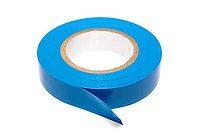More than 90 international coatings experts met June 6-7 in Berlin for the European Coatings Conference "Smart Coatings," where they held in-depth discussions of the functional coating systems of the future. Hot topics in the 15 papers and in the discussion groups were the application of organically conductive coatings, switchable polymer systems, intelligent pigments, nanoparticle technologies and nano-structured hybrid systems. Further themes were self-regenerating ultra-hydrophobic films, coatings for storing information and paint-on liquid crystal displays.
This was the ninth time that Vincentz Verlag has hosted an event in the European Coatings Conference Series. Under the heading "Smart Coatings," this took as its theme those coatings whose functionalities are pushing the envelope where the properties of coatings and films are concerned. It presented an interesting cross-section of different properties and an insight into the current state of development work, from the underlying research right through to practical applications. A few selected papers are presented briefly below:

Multiple Applications for Organic Metals
Organic metals have been the subject of, in some cases, passionate debate for some years, and were presented by Dr. Bernd Wessling (Ormecon Chemie GmbH & Co. KG). Manufacturing and incorporating electrically conductive polymers into coating materials has become part of normal practice today at Ormecon, in both water- and solventborne systems. It was explained that the application opportunities go far beyond the area of corrosion protection (conductive primers), and various examples were given of functional surfaces, such as use in the electrodes of electroluminescent displays or LEDs, in the manufacture of printed circuit boards and in the form of antistatic coatings. Within the sector of corrosion protection, examples of industrial applications from abroad showed that there is more receptiveness to the new technologies there than in Ormecon's own country.
Dr. Peter Spellane (Polymer Alloys LLC, USA) developed this theme, reporting on corrosion protection using polyaniline and polyphenylene ether (PPE). He went into considerable detail on the subject of electrochemical measurements, and also put forward ideas for the chemical mechanisms of such coatings.

Switchable Properties through Interactions
Prof. Ulrich S. Schubert (Eindhoven University of Technology, Netherlands) presented an innovation from the area of fundamental research: by combining supramolecular chemistry and polymer chemistry, materials could be given "switchable" bonds which operate by way of reversible bonding and the formation of non-covalent bonds such as by complex-making. This is indeed a promising line of research, which will need much more development work before it is ready for industrial application.
Prof. Rolf Hempelmann (SusTech GmbH) uses electromagnetic fields in dispersions of nanometre-range ferrite in polymer matrices to produce, initially, heat which makes it possible to control or measure certain properties. One example is an intrinsic protection against overheating, as a result of giving materials containing nano-ferrite receptor particles a specially tailored Curie point.
Functional Coatings through Special-Effect Pigments
On the subject of controlling coating properties, the pigments used are taking on a more and more important role. Dr. Elke Steudel (Merck KGaA) showed that pigments made from micaceous iron ore, with or without silica, and coated with tin/antimony oxide offer an alternative to conventional conductive materials. Besides the well-known areas of application such as antistatic coatings, tailored pigments which enable overheating to be avoided as a result of controlled heat dissipation are also possible.Dr. Yiping Ma (Tongji University, China) took a similar approach, giving his coatings what he called a "chameleon" character. The colour of the pigments used changes as a function of temperature, giving modified reflectance spectra. The materials are intended for use in architectural coatings as a means of regulating temperature.
Dr. Jack Hale (University of Newcastle, Great Britain) has successfully applied the piezoelectric effect of ceramic particles incorporated into coatings materials to vibration measurement. His coatings can be applied to bridges or aircraft bodies and generate an electronic pulse on deformation, which can be used to quantify mechanical expansions. He reported that these "piezoelectric paints" could be sprayed directly onto the surfaces of objects to be measured, representing a clever new type of sensor.

Structural Principles and the Tailoring of Properties
Dr. Uwe Wienhold (Institut fur Lacke und Farben e.V.) presented his method for obtaining modified coating materials with improved properties. Taking as a starting point conventional coatings chemistry, by introducing sol-gel structures into organic binders, inorganic/organic hybrid materials were produced which, after modification at molecular level, can give relatively hard coating materials or indeed the option of easy-clean properties. The method presented provides a cost-effective alternative to materials synthesised purely by the sol-gel process, and could be applied to numerous conventional binder systems.
Through Prof. Helmut Schmidt (Institut fur Neue Materialien gem. GmbH), the event boasted as a speaker one of the best-known researchers in the field of modern coating materials based on the chemistry of nanotechnology, and to a certain extent he gave the conference his very own stamp. In his paper, he discussed the fundamental principles of the synthesis of so-called "smart materials," citing a vast range of potential and already existent applications. The audience was presented with wide-ranging results from the sectors of, among others, corrosion protection, non-stick films, UV-polymerizing hard coatings, abrasion-resistant films, easy-clean films with low free surface energy, anti-fogging films, photocatalytic films and texturing materials. For some of the delegates, who were not yet familiar with these new technologies, a little more detail about fewer topics, given the brevity of a single paper, might have been preferable. Similarly comprehensive in scope was the paper from Dr. Gerhard Schottner (Fraunhofer Institut fŸr Silicatforschung ISC), who primarily discussed the multiplicity of synthesis methods available to coatings materials by the sol-gel process, and described the material properties resulting from the different synthesis routes. In this, it is possible to control the material properties through a suitable choice of molecular starting compounds, which are based on metal alkoxides and organoalkoxysilanes.
Keeping Surfaces Clean of Dirt and Bacteria
Cleaning surfaces, and then keeping them clean, is nowadays associated with certain terms such as "easy clean", the "lotus effect" or the "photocatalytic effect". In his paper, Dr. Stefan Goedicke (Nano-X GmbH) discussed the results of these individual effects and explained the differences and modes of action. By combining different nanoparticles, it is even possible to combine these effects with one another, but here too there is no one material that could be used universally for all applications, but rather individually adapted materials have to be adopted for different tasks.The use of nanoscale particles with antibacterial properties in coatings was reported on by Dr. Christian G"bbert (ItN-Nanovation GmbH). Titanium dioxide in the nanoparticle range, coated with a minutely fine layer of silver, has a very large surface area and hence a long-term action as a biocidal substance. Its activity against various microorganisms when used in transparent coatings is both very effective and versatile. Possible applications include, for example, door handles.
Ultra-hydrophobia as a means of ensuring clean surfaces was the method presented by Dr. Rolf Claessen (SuNyx Surface Nanotechnologies GmbH) as the next generation of self-cleaning glass surfaces. By means of a new mechanism in which active substances are transported continuously from the interior of the coating to the surface in minute quantities, the limited service life of current easy-clean films is to be dramatically increased - to several years. Computer simulations are also being used to develop suitable materials to produce transparent surfaces for optical applications.
Coatings with a Molecular Memory
Nucleic acids can be used as a basis for molecules to store electronic data. This property can also be incorporated into coatings. The objective of the work presented by Hilmar Rauhe (Informium AG) is to create coatings which contain directly stored information or which can be used to label articles. For many industrial products - including coatings - and industrial processes, this method could be used to introduce a new type of quality assurance and to store, within the coating, data ranging from the raw materials to the intermediate products right through to other parameters relevant to quality, and to read this off again from any sample of that coating (see also FARBE&LACK 12/2001, p. 97).Coatings as Displays
Extremely thin liquid crystal displays (LCDs) can be made by light-induced polymerization. The functional layer is applied as a thin film, and a phase separation is brought about between the liquid crystal and the polymer in a photochemical curing process, described by Dr. Steve Klink (Philips Research; Netherlands) in his presentation. The liquid-crystalline phase has the electro-optical property, and the polymer above it is the hard layer. This method can be used to tailor displays in a broad range of forms.Intensive Discussion over Two Days
Between the individual papers, and during a historically fascinating boat trip on the Spree, there was plenty of material to allow detailed discussions between the delegates. These debates between the various so-called "Genius Groups" (groups of participants who dedicated their attention to particular technical questions) were reported as brief presentations for the entire audience, too, and in some cases this in turn prompted new discussions. The event had participants from throughout the world, giving a very good and indeed representative cross-section of many topics, some less familiar to coatings experts but all the more interesting for that, which are sure to give the technology of coatings materials a new stimulation to innovative work. c
The next European Coatings Conference, "Parquet Coatings II," will take place November 14-15 in Berlin. For the second time, the focus topic will then be innovative raw materials, formulations, as well as curing and application technology for Parquet Coatings.



Report Abusive Comment